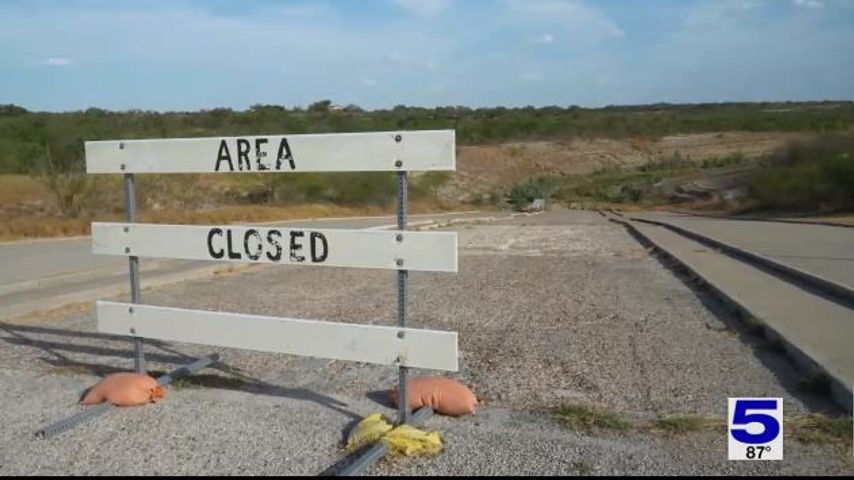Water shortage means fewer visitors at Falcon State Park
Falcon State Park is still open. But these days it's getting fewer visitors. The boat ramp is closed. And it's a harder, longer drive to get to the water.
The drought and lack of rain are causing water levels to plunge at the Falcon Reservoir.
The Falcon Reservoir, also known as the Falcon Dam, was built in 1953 to control the flow of water into the Rio Grande Valley.
RELATED: Car washes may be first businesses hit by water shortage restrictions
On Tuesday, the water was so low at the dam that the six gates used to control the flow of water were no longer usable. The water is five feet lower than it was three months ago and seven feet lower than it was last year.
The dam still works and is still able to deliver water to the Rio Grande Valley through the hydroelectric system.
At Falcon State Park, a Roma family who visits every few weeks noticed the change.
"There's no water, like this is usually covered with water," said park visitor Hilda Moreno.
READ ALSO: Cameron County drought contingency plan impacting farmers
The reservoir is now 40 feet below its original capacity. As the lake keeps pulling back, the mud stays.
"Mud just came out of nowhere and it sunk my back tires," said park visitor Felipe Garica, who had to pay a wrecker $300 to get his vehicle out.
Emmy Pilon with the Falcon Lake State Park says it's harder for people to get their boats in.
READ ALSO: Drought conditions raising concerns for Valley farmers
"It's hurt visitation," Pilon said. "It does impact-- it takes an impact on state parks."
The International Boundary and Water Commission is waiting on new numbers to determine the total combined water capacity at Falcon Reservoir and the Amistad Reservoir near Del Rio.
Water restrictions may be triggered in Rio Grande Valley cities based on the numbers.





